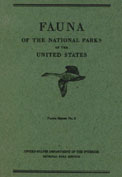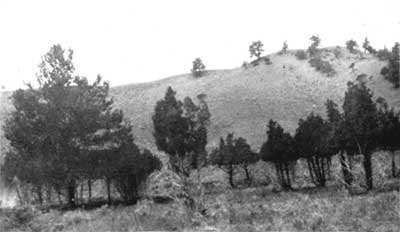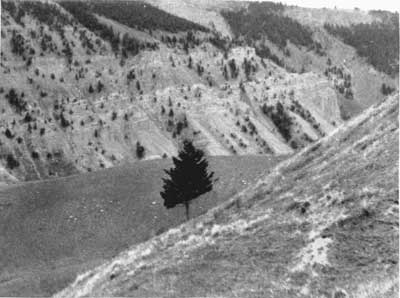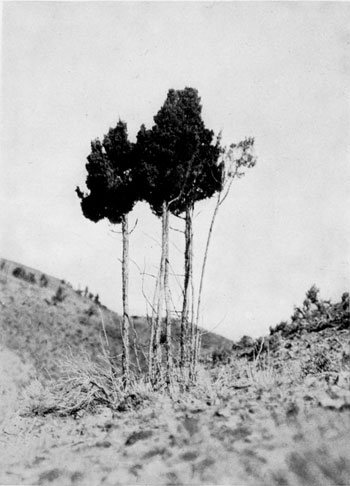![]()

Fauna Series No. 2
![]() Part II
Part II
Fauna of the National Parks
of the United States
PART II
REPORT UPON WINTER RANGE OF THE
NORTHERN YELLOWSTONE ELK HERD AND
A SUGGESTED PROGRAM FOR ITS RESTORATION

Figure 31. – Juniper, piñon, and all other
available browse stripped as high as the elk can reach. Where is the
next crop of browse to come from–
(Photograph taken June 8,
1932, near Mammoth Hot Springs, Yellowstone. Wildlife Division No.
2543.)

Figure 32. – Elk-browsed Douglas fir. It is over
7 feet from the ground to the lowest foliage. What becomes of the
Douglas fir saplings less than 7 feet tall? The tall grass is the
unpalatable rye grass.
(Photograph taken May 19, 1932, Mammoth Hot
Springs, Yellowstone. Wildlife Division No. 2530.)

Figure 33. – Elk-browsed juniper. Food is
scarce when elk take juniper to this extent. Like most browse,
juniper can be so cropped only once. After that a new stand
must provide the next forage. But here the seedlings are taken
before they get a start.
(Photograph taken April 30, 1932, at
Gardiner River, junction of Lava Creek, Yellowstone. Wildlife
Division No. 2020.)
NEXT> Photo Collection (continued)
Top
Last Modified: Tues, Feb 1 2000 07:08:48 pm PDT
http://www.cr.nps.gov/history/online_books/fauna2/fauna3b1a.htm
![]()